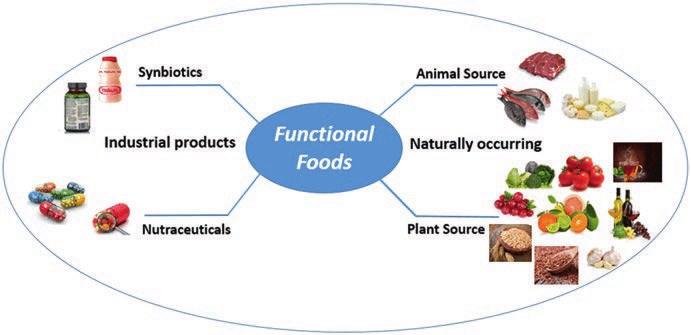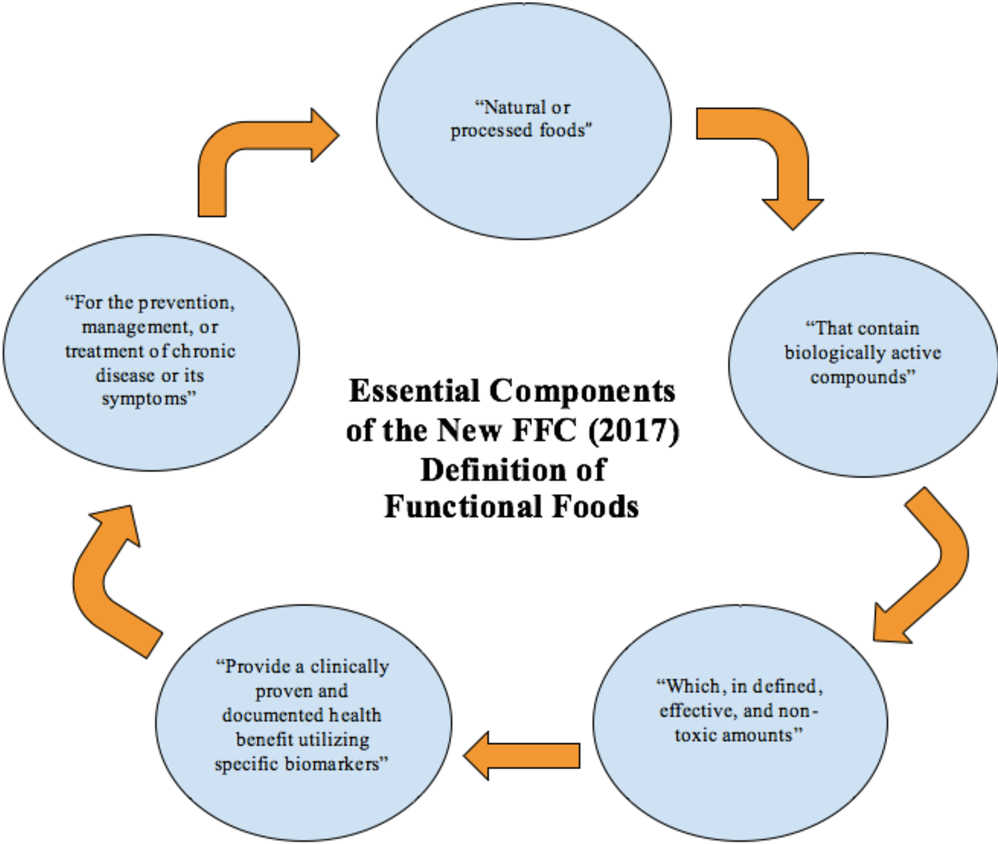
Food-as-medicine is a paradigm and model used in the restoration of health and prevention of disease. Considering that research has implicated poor dietary habits (i.e., excess consumption of ultra-processed foods, alcohol, and vegetable oils) to the advent and progression of metabolic syndrome and other diseases, it is imperative that solutions are employed to mitigate such illnesses while restoring homeostasis. As part of a larger and inclusive plan, solutions can include the use of functional foods and nutraceuticals. As such, the following will explore said interventions, their definitions, applications, and efficacy.

Functional foods and nutraceuticals (FFNs) can be broadly defined as foods and food constituents, respectively, which provide particular health or medical benefits to include the prevention and treatment of diseases.1 Such an approach and model has been dated back many epochs; approximately 2500 years ago, records have indicated that Hippocrates (a physician in the Classical Greece period), considered food as medicine and medicine as food.2(51) Ultimately, such a philosophy is not novel, but rather, an approach that has been deeply rooted within many cultures and the historical record of civilization.

FFNs include the wide array of foods with disease-preventive characteristics and health-promoting properties, as well as foods that are enriched with a specific health beneficial component, herbs, vitamin and mineral supplements, probiotics, and phytochemicals.1(52) Some examples of functional foods include: fish oils (reduce inflammation, improve cardiovascular health), flax seed (improves gut motility, antioxidant properties), olive oil (increases high-density lipoproteins, antioxidant properties) yogurt (provides probiotics, improves digestion), onions (may reduce heart disease, is a prebiotic), and wine (antioxidant properties, reduces oxidation of low-density lipoproteins).1(57-58) Such examples are but a modicum of the total spectrum of functional foods available.

Nutraceuticals, as mentioned previously, are naturally occurring substances in foods, which have been found to be efficacious in the treatment and/or prevention of diseases as well as the improvement of physiological performance.1(58)Furthermore, the number of known nutraceuticals are in excess of 100, and is likely to expand.1(59) Some examples of nutraceuticals include: omega-3 fatty acids (anti-inflammatory, reduces cardiovascular disease), zinc (boosts immune strength, enhances wound healing), coenzyme Q10 (involved in mitochondrial energy metabolism), tocopherols (antioxidant, prevents lipid oxidation), selenium (antioxidant, precursor for thyroid hormone), and folic acid (reduces homocysteine concentrations).1(60-63) As in the case of outlining functional foods, the above-mentioned nutraceuticals are a small sample of a larger and more robust palate.

FFNs have the capacity to serve as an intervention to disease states due to their inherent involvement and symbiotic relationships to cellular and metabolic functions. From a cellular/tissue/organ/organ system/organism hierarchy and perspective, macronutrients and micronutrients share harmonious and synchronized roles at each level. For example, deficiencies in macronutrients such as fats/essential fatty acids, has been linked to the pathogenesis of many diseases to include diabetes, cancer, heart disease, and multiple sclerosis.2 Ingesting whole food sources rich in essential fatty acids (i.e., EPA and DHA) such as fish and flax seed can help restore health and function of the same.2(294) However, there are instances where deficiencies are so great that targeted use of specific micronutrients (i.e. nutraceuticals) is appropriate. The following will consider the same in greater detail.

Nutraceuticals have proven useful when nutrient deficiencies are so severe that functional foods may not provide sufficient quantities of said nutrient, in an expeditious fashion, to correct the deficit. In such cases, nutraceuticals serve as a focalized and expedient intervention, and adjunct, to a whole foods approach. An example demonstrating the use of nutraceuticals can be seen when individuals exhibit genetic polymorphisms of methylenetetrahydrofolate reductase (MTHFR); an enzyme, which converts folic acid into its usable form (5-methyltetrahydrofolate or 5MTHF) to facilitate maintenance of normal homocysteine levels and production of s-adenosyl methionine (methylates several substances).2(37) Left untreated, homocysteine levels can rise as has been associated with elevated homocysteine levels are associated with hyperlipidemia, hypertension, retinal vein occlusion, and venous thromboembolism.3 Such instances may require a supplemental form of folate, which bypasses the need for MTHFR, such as 5MTHF.4
In conclusion, food-as-medicine is a paradigm and model used in the restoration of health and prevention of disease. Upon assessment of signs (biomarkers) and symptoms (reports from the patient), interventions must be developed and implemented to mitigate and control illnesses while restoring homeostasis. Part of such an approach can include the use of FFNs as an adjunct intervention, when and where indicated. Ultimately, the implementation of an integrated methodology should help liberate individuals from disease while enhancing health, performance, and longevity.
References
1. Paliyath G, Shetty K. Functional foods, nutraceuticals, and disease prevention: A window to the future of health promotion. 3-395. doi:10.1002/9780470960844.ch1.
2. Lord RS, Bralley, JA. Laboratory Evaluations for Integrative and Functional Medicine. 2 nd ed. Duluth, GA: Genova Diagnostics; 2012.
3. Vidmar M, Grzelj J, Mlinaric-Rascan I, et al. Medicines associated with folate-homocysteine-methionine pathway disruption. Arch Toxicol. 2018; 93(2):227-251. doi:10.1007/s00204-018-2364-z.
4. Scagilone F, Panzavolta G. Folate, folic acid, and 5-methyltetrahydrofolate are not the same thing. Xenobiotica. 2014;44(5). doi:https://doi.org/10.3109/00498254.2013.845705
-Michael McIsaac
